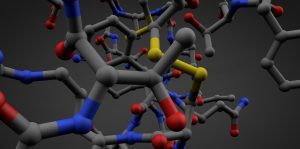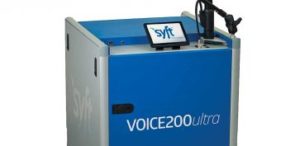High-Throughput Qualitative and Quantitative Analysis of Volatile Residues in Polymers
Key Resources: High-Throughput Qualitative and Quantitative Analysis of Volatile Residues in Polymers

Polymers are primarily synthesized by polymerization of low-molecular-weight organic compounds. As a result, monomer residues and other volatile byproducts can be trapped in the polymeric material.
These volatiles then migrate through the polymer and transfer into adjacent materials such as pharmaceuticals and consumer products (if the polymer is used as a packaging material). The reverse process can also occur, where compounds — especially more volatile ones — can migrate from the product into the polymeric packaging.
Therefore, in order to minimise migration to food and pharmaceutical products, ensuring that volatile leachable impurities are at low levels in polymeric materials is very important.
Sustainability initiatives have led to more recycled polymers being used by industry and therefore more frequent testing is required.
Direct‑injection mass spectrometry (DIMS) techniques such as Selected Ion Flow Tube Mass Spectrometry (SIFT-MS) provide high throughputs at a low cost for each sample.
In this article for LCGC, Vaughan S. Langford, Syft Technologies, & Mark J. Perkins, Anatune review polymer analysis applications of automated headspace SIFT-MS.
Rapid quality assurance/quality control (QA/QC) screening of approximately 250 samples a day was conducted using targeted or untargeted analysis, while quantitative volatile impurity analysis was achieved efficiently using multiple headspace extraction (MHE)-SIFT-MS.
Syft Technologies – Sift-MS Voice200 UltraHighThroughput
Conclusions: High-Throughput Qualitative and Quantitative Analysis of Volatile Residues in Polymers
Increased use of recycled plastic in consumer packaging means that wider testing of volatile residues is required. Automated SH‑SIFT‑MS has the potential to accommodate new analytical demands while also tackling existing volatile impurities polymer analysis because throughputs of greater than 250 samples per day are achieved.
Moreover, SIFT-MS instruments can run targeted and untargeted analyses in a single sequence. Quantitative analyses of volatile residues in polymers are readily conducted using MHE-SIFT-MS, with an eightfold throughput enhancement for six‑injection MHE.
SIFT-MS also provides a unique breadth of analysis because of direct, soft chemical ionization of sample headspace, as exemplified by simple analysis of formaldehyde.
Read The Full Article HERE

Vaughan S. Langford, Syft Technologies, & Mark J. Perkins, Anatune
Additional Resources
AS201: High-Speed Formaldehyde Analysis for the Process-Line and Laboratory: Sift-MS
AS215: High-Speed Formaldehyde Analysis for the Process-Line and Laboratory: SIFT-MS
AS147: Analysis of Formaldehyde from a Wax Candle Flame Using SIFT-MS

Previous post
Irish Mass Spectrometry Society 2022 – We Will Be There!

